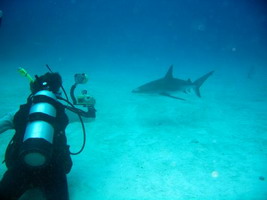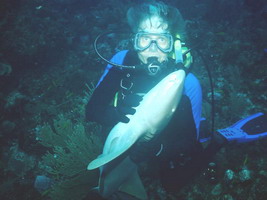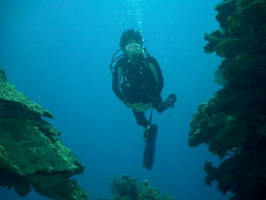David "Rainmaker" Mauldin's Scuba Adventures
Page Last Updated: September 23, 2014
My ebooks The Passion Killers, A Dark Wind of Vengeance, Blood Beyond the Abyss and The Second Layer of Hell (apocalyptic fiction) are now available for download. They are the first four installments in the Path of Survival series. To see additional information, click here ."Life's journey is not to arrive at the grave safely in a well preserved body, but rather to skid in sideways, totally worn out, shouting
HOLY CRAP, WHAT A RIDE!" - - Hunter Thompson



Curious Caribbean Reef shark in Bahamas, tourist submarine in Mexico, shark "wrestling" in Belize
.jpg)

Traffic jam in the Florida Keys, reef diving in Honduras
.jpg)
.jpg)
Wreck diving in Costa Rica, plane wreck dive in Jamaica

rainmaker@trailquest.net
Welcome to my scuba adventures page. After viewing the pages here (see the navigation box below), you may wish to visit the TrailQuest Web site and my home page (see links at the top of this page). I am not making any suggestions here concerning what anyone else should do. I am merely expressing my own opinions, sharing information about my dives, gear, training and trips and stating what works for me.
I logged my 1,000th dive in Cozumel, Mexico on January 15, 2012
Added January 16, 2012: My January 2012 Cozumel dive & topside photos at Facebook
Added March 2, 2009:
My 9-minute "Shore Diving In Cozumel" video at YouTube
Certification agency: Scuba Diving International (SDI)
Certification level: Nitrox / Solo / Rescue / Master Scuba Diver
Dive history: Jamaica, Costa Rica, Bahamas, Honduras, Belize, Mexico(5x), FL Keys(2x), FL springs & SC lakes
Number of logged dives: 1,042
Longest dive: 101 minutes
Deepest dive: 133 ft.
Most recent dive: September 23, 2014
My Dive Photos
Added March 2, 2009: My 9-minute "Shore Diving In Cozumel" video at YouTube



